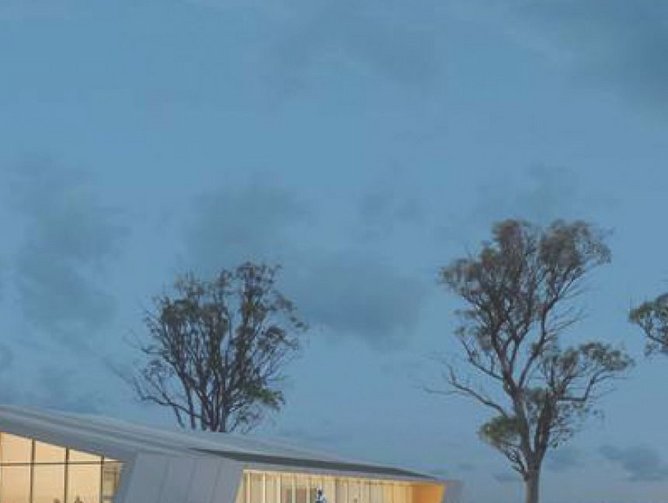A university filled with the rich traditions of the small agricultural city of Armidale, NSW, the University of New England (UNE) strives to deliver the best in both physical infrastructure and online education.
UNE has led the sector’s transition to online digital learning. As a university of about 22,000 students, approximately 18,000 take online courses from various parts of Australia and internationally.
“We actually have more online students in Western Sydney than we have on campus,” said UNE Director of IT, Robert Irving. “There’s a massive dependency on our technology for being able to educate and provide quality services to them.”
The beginning of big changes
When Irving came to UNE as the director of the IT department in 2011, the quality of services needed an overhaul.
Since then UNE has implemented a program of updates to all aspect of IT delivery in order to stay competitive with the world of online education .
“Completing that work has formed a large part of our mission for the past five years,” said Irving. “We have modernised everything from the fibre in the ground to the development of cutting-edge teaching and learning applications.
UNE installed a new fibre-optic cable from Armidale to Narrabri over 300 kilometres to replace the one internet connection between its main campus and Australia’s academic research network.
“We’ve gone from being on a one gigabit piece of string to having very scalable, diverse network links,” said Irving. “That was the kind of core capability we needed to create. Until we had that in place, our other services couldn’t take advantage of that capacity and cloud services weren’t an option.”
In addition to installing such a robust connection, UNE chose Extreme Networks for the network core and Palo Alto Networks as its main vendor for network security.
“We have protected our networks with the next generation of security, as well as a core network that had the throughput for the amount of traffic we were anticipating,” said Irving.
Kicking off a new era of tools
UNE implemented several key tools to streamline processes for both students and staff. A crucial component in this set is a new online application system run through Oracle’s Service Cloud.
“We were having a lot of students that started the application process, but wouldn’t finish it. We wanted to make sure we made that an easy process for them.
“We identified the issues that take far too long to process applications, and addressed that with Oracle’s policy automation tools.” Irving said.
Utilising Oracle’s services, UNE has built a new application system that provides a very smooth entry process into the university.
“Since the new application system has gone live, UNE has seen the number of completed applications increase by 5.8 percent, and the number of students seeking assistance drop by over half,” Irving explained.
“We have also provisioned Skype for Business for all of our staff and students.
“It’s an amazing platform that facilitates easy communication, allows students to speak with staff members and collaborate on projects with other students, all without incurring telecommunication costs.”
According to the IT director, the idea of separate platforms for different modes of communications does not meet the client’s needs.
“You don’t want to think about how to connect with people, whether by message or voice or video call,” Irving said. “You want one platform that does it all, that lets you turn on extra capabilities as you need them right there while you’re connected. You can go from an IM session with one colleague to a full video conference with hundreds of people in one click.”
“Microsoft is creating some amazing new functionality; we are particularly excited about the real time translation services coming online from Microsoft this year,” said Irving. “This will be fantastic in assisting our international students in a variety of ways. You’re not going to see these types of capabilities in your Cisco VoIP system any time soon.”
Clearing the obstacles
Among the biggest obstacle in revamping its IT department was the large amount of work UNE had to do all at once. While the University’s aims for digital dominance would have been far-fetched five years ago, UNE is now in a good position to reach that goal according to Irving. To achieve upgrades on a relatively short timeline, UNE determined the ideal technical delivery order, starting with core network installation, laying fibre-optic cable, and establishing a state-of-the-art wireless network.
“We are now working towards moving from a wired to a wireless network for all of our computing devices, with some great savings to be achieved in the edge network and reducing complexity in the overall networking environment,” he said. “
With 170 buildings on campus, UNE now has a core network with capacity reaching far beyond current needs.
“Our network capacity won’t be an issue for this university for decades,” said Irving.
“I think that’s what separates us. It’s been a real challenge to do it all in such a short timeframe, and at the same time, we’ve now built this really fantastic infrastructure that integrates smartly with the platforms and applications.”
Supporting the staff
UNE was voted as providing the best IT service for students four out of the past five years in Australia and New Zealand. As a leading online education provider, providing the best support is critical to student success, this is something UNE is very good at. With a mature service desk team comprised of members with 5-10 years experience, the staff knows UNE’s IT services inside and out.
UNE brought in an IT trainer to help with the adoption of all new technologies, and is now working on a specialised training program for Skype for Business and OneNote. In addition, UNE is taking training for Microsoft to the next level. With the help of Microsoft’s academic trainers, UNE will implement high-intensity training in an increased effort to heighten their technology capability.
“We’ve got people using the platforms and they’re doing all right with it, but we think we can achieve a lot more,” said Irving. “Our goal is to achieve digital leadership through our staff and students, and the technology enables them to do this.”
UNE is in the process of replacing its home-built identity management system with Microsoft ForeFront Identity Manager, which is a strategic move as the university continues to adopt more and more Microsoft technology.
“We see that being very significant in how we affect a lot of our business processes,” said Irving. “We know it will translate into better digital services for our students and our staff.”
Irving said it is a project that began at the beginning of 2016, and will run for the next 24 months.
“The technology part of this IAM project could be achieved far more quickly but we want to ensure the improvements are achieved and cemented within our business processes. These are rare opportunities to make business changes, and we have to make them count,” said Irving.
At the fore of innovation
While UNE’s online application system by Oracle went live in March 2015, the institution is looking to find ways to bring its enrollment system to mobile devices to make the application experience more seamless.
UNE will shift its infrastructure to Infrastructure as a Service (IaaS). Currently with two data centres in Armidale and one in Sydney, UNE will soon have no need to manage its own infrastructure. Instead, the university will move to IaaS and Platform as a Service (PaaS) so UNE can focus on its application layers, which are its key areas for differentiation.
“In our mind, that’s probably more of a two to three year project, so as hardware comes to end-of-life, it will move out to IaaS,” said Irving.
“We have a strategic plan to achieve digital dominance by 2020. That will mean taking a very different view of what a traditional IT department does in a university, transforming it to a market leader based on innovations.
“This certainly isn’t a paint-by-numbers strategy, it will be a quest where innovation and change happens,” he said.
“We’re in an exciting place in terms of what we can do in the future. We really do have the platform to build off, which will take us a long way into the future.”






